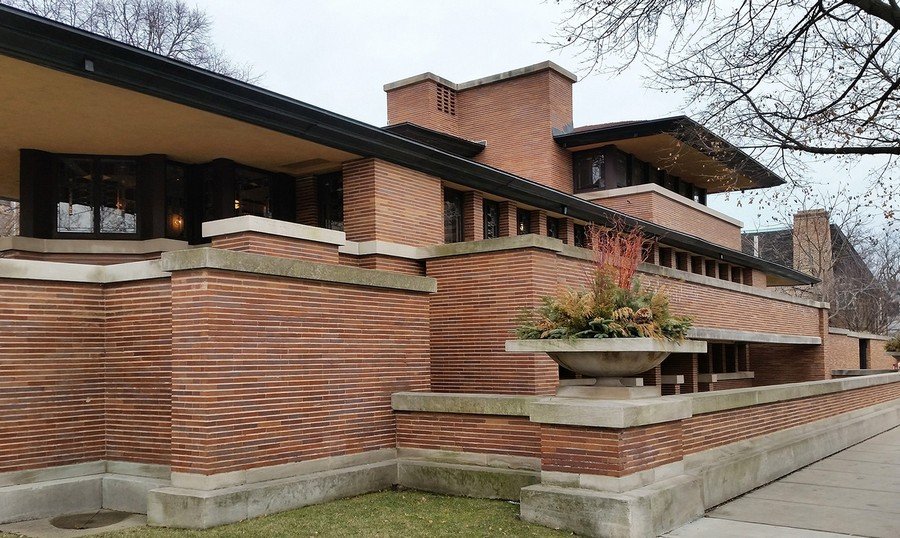#11952. The Horizontal Façade of Robie House: Harmony of Brick and Geometry in Prairie Style
This image showcases an iconic example of Frank Lloyd Wright's architecture — the Robie House in Chicago, built in 1909. This masterpiece embodies the principles of "organic architecture" and the Prairie style developed by Wright in the early 20th century.
The façade is characterized by pronounced horizontality, emphasized through long bands of brickwork and wide, cantilevered eaves. These horizontal lines, echoing the boundless prairies of the Midwest, create a sense of groundedness and connection to the landscape. The warm terracotta-colored brick harmoniously combines with concrete elements, creating a rhythmic visual contrast.
The architectural composition is built around a central massive brick chimney from which other spaces of the house extend. Characteristic of Wright's style, the broad roof overhangs protect the ribbon windows from direct sunlight, creating an interplay of light and shadow. Decorative elements, such as the concrete planter with vegetation, seamlessly integrate into the overall geometry of the building.
For contemporary architects and homeowners, this façade offers several significant techniques: the use of natural materials with expressive textures, creation of horizontal accents to visually expand space, integration of functional elements (such as eaves) into the building's aesthetics, and the carefully considered balance between open and closed surfaces. Even small decorative details, like built-in planters, can become focal points highlighting the individuality of the house and its connection with nature.
